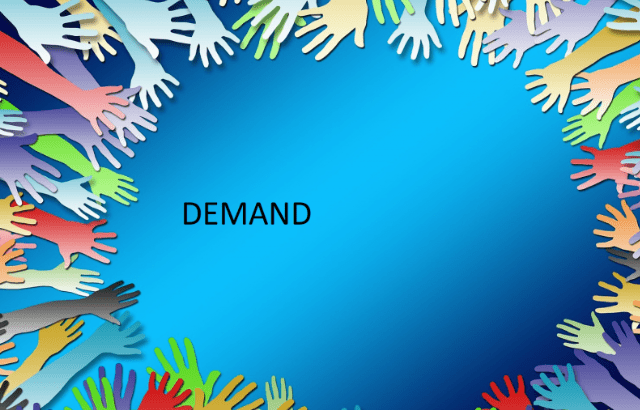The basic concept and types of demand: There is a difference between demand and desire. A sickly child needs a tonic or a peon desire to have a TV set. But, this kind of need and desire does not constitute demand.
Concept and types of demand
When a person is willing and able to pay for what he desires, then the desire is changed into demand.
The three components are needed to constitute any demand for a commodity.
- Desiring to have a commodity
- Financial ability or ability to pay for a commodity
- Willing to pay for the commodity
Types of Demand
There are three 3 kinds of demand.
Price demand: Price demand refers to the various quantities of a commodity or service that a consumer would purchase at a given time in a market at various hypothetical prices. Other things remain unchanged, like; consumers’ taste and preference, income, prices of inter-related goods. Price demand expresses the relationship between prices and quantities demanded.
Income Demand: Income demand refers to the various quantities of goods and services, which would be purchased by consumers at various levels of income. Other things remain unchanged. Income demand expresses the relationship between income and quantities demanded.
Cross Demand: The cross demand means the quantities of a commodity or service which will be purchased with reference to change in price not of these goods but of other inter-related goods. These goods must be either substitute or complementary.
Which goods are substitutes or complementary? A change in the price of tea may affect the demand for coffee. Similarly, if horses become cheap, demand for carriages may increase.
Basic causes of changes in demand
- Changes in tastes, preferences and fashion:
- Increasing habit of taking tea decreases the demand for milk.
- The fashion among, ladies to keep hair long or short brings about changes in demand for hair-pins, hair-net, etc.
2. Climate or Weather Changes: in winter, there is a greater demand for warm clothing. In summer, there is a great demand for electric fans room coolers, cooling drinks.
3. Changes in the size and composition population: If lakh of children born in Bangladesh every day, naturally there will be demand for toys, feeding bottles, and nipples, etc.
4. Change in Money Supply: Where there is inflation, additional money will add to the purchasing power of the community. Shortage of sugar increases demands for gur and shakar and restriction of the supply of electricity a demand I’m Kerosene and so on.
5. Change in the Price of the commodity: Lower the price, the greater is the demand.
6. Change in Real Income: Change in real income changes in demand.
7. Change in the level and distribution of income: If the wealth is redistributed, the tax imposed on the rich man and spend on the poor. If the household income is larger, consumption is larger.
8. Change in Saving: More saving less purchasing.
9. Change in asset preference: Liquidity preference like ready cash, demand will low.
10. Expectation or Anticipation: If the prices are expected to rise in the future, the demand for a good increase.
11. Prices of Related Goods: A decline in the price of one good results in a decline in demand another.
